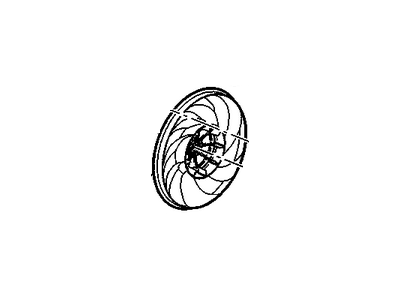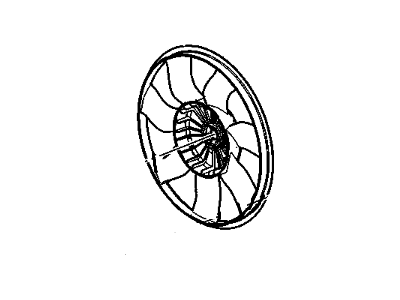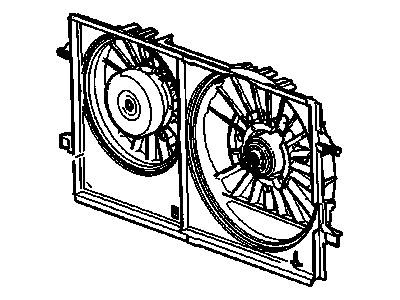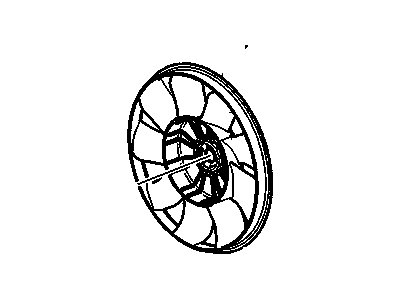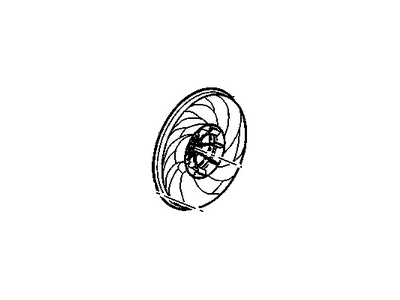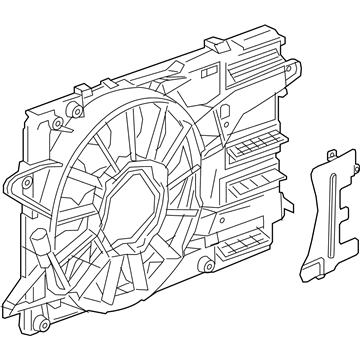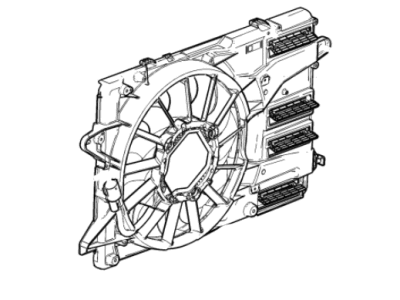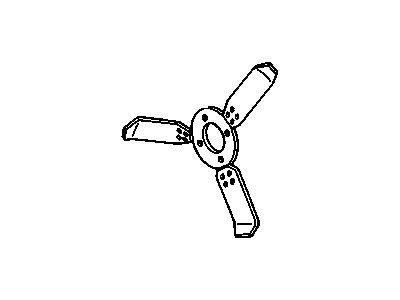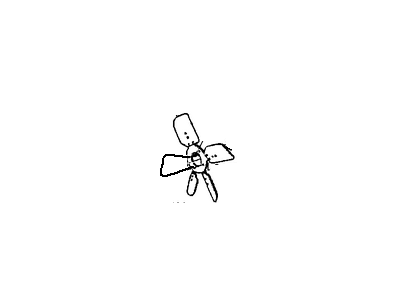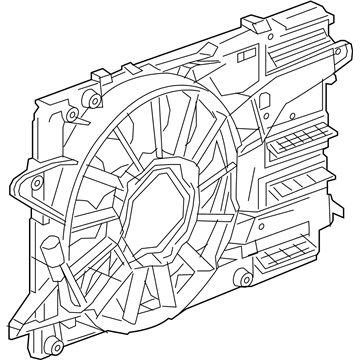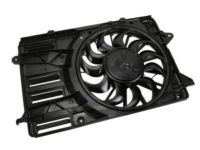My Garage
My Account
Cart
Genuine Chevrolet Malibu Radiator fan
Radiator Cooling Fan- Select Vehicle by Model
- Select Vehicle by VIN
Select Vehicle by Model
orMake
Model
Year
Select Vehicle by VIN
For the most accurate results, select vehicle by your VIN (Vehicle Identification Number).
14 Radiator fans found
Chevrolet Malibu Fan,Engine Coolant
Part Number: 20970656$173.29 MSRP: $364.03You Save: $190.74 (53%)Ships in 1-3 Business DaysChevrolet Malibu Blade Kit,Engine Cooling Fan
Part Number: 20757669$7.76 MSRP: $14.64You Save: $6.88 (47%)Ships in 1-2 Business DaysChevrolet Malibu Fan,Engine Coolant
Part Number: 15788745$161.63 MSRP: $339.56You Save: $177.93 (53%)Ships in 1-2 Business DaysChevrolet Malibu FAN ASM-ENG CLR
Part Number: 86828263$290.28 MSRP: $609.84You Save: $319.56 (53%)Ships in 1-3 Business DaysChevrolet Malibu Blade Kit, Engine Cooling Fan
Part Number: 20757670$40.22 MSRP: $84.50You Save: $44.28 (53%)Ships in 1-2 Business DaysChevrolet Malibu Blade Kit,Engine Cooling Fan
Part Number: 20757668$6.19 MSRP: $11.69You Save: $5.50 (48%)Ships in 1-2 Business DaysChevrolet Malibu Fan,Engine Coolant
Part Number: 20970657$173.29 MSRP: $364.03You Save: $190.74 (53%)Ships in 1-3 Business DaysChevrolet Malibu FAN ASM-ENG CLR
Part Number: 86828264$372.54 MSRP: $671.24You Save: $298.70 (45%)Ships in 1-2 Business DaysChevrolet Malibu Fan Kit,Engine Electric Coolant
Part Number: 12362564$42.15 MSRP: $79.52You Save: $37.37 (47%)Ships in 1-2 Business DaysChevrolet Malibu FAN ASM-ENG CLR
Part Number: 85109578$235.07 MSRP: $493.84You Save: $258.77 (53%)Ships in 1-3 Business DaysChevrolet Malibu FAN ASM-ENG CLR
Part Number: 85109577$261.03 MSRP: $470.32You Save: $209.29 (45%)Ships in 1-3 Business Days
Chevrolet Malibu Radiator fan
The Radiator Fan in Chevrolet Malibu is functional and crucial as it helps in distribution of air across the radiator with a view of cooling down the temperate of the engine. When the vehicle is stopped, or moving slowly, a fan comes into play to maintain forced convection akin to the normal velocity air movement that would otherwise occur to cool the coolant before it is circulated back to the engine. Chevrolet Malibu models are equipped with both mechanical and electric Radiator Fans. Mechanical fans are usually built in the water pump shaft; they connect through a thermal clutch to save noise and fuel and to disconnect at high rpm. On the other hand electric fans whose power source is a 12V motor work by using coolant temperature and air conditioning requirements to switch on and maintain a constant flow of air as required. To improve the circulation of air around the radiator each kind of fan is encased within a shroud; the major difference is the manner of their function and performance at various driving scenarios.
Each OEM Chevrolet Malibu Radiator fan we offer is competitively priced and comes with the assurance of the manufacturer's warranty for the part. Furthermore, we guarantee the speedy delivery of your orders right to your doorstep. Our hassle-free return policy is also in place for your peace of mind.
Chevrolet Malibu Radiator fan Parts Questions & Experts Answers
- Q: How to disconnect the cable from the negative terminal of the battery and remove the radiator and cooling fan module on Chevrolet Malibu?A: The negative terminal of the battery should be disconnected from the cable. Drain the cooling system below the upper Radiator hose level in 2015 and earlier models and all 2.5L engines. If the coolant is relatively new or in good condition, save it for later use. In case provided, remove the engine cover fasteners and the cover. Loosen that hose clamp then slide it back on upper hose, thereafter detach radiators upper hose from radiator. On 2.5L engines get rid of front bumper fascia, radiator support trim panel and hood latch; thereafter remove radiator support fasteners and radiator support. Detach the electrical connectors to the cooling fans, then disengage wiring harness retainers from shroud, and move harness out of way. Disengage transaxle cooler lines from retainers on shroud. Obtain fan shroud mounting bolts at top corners of shroud, then tilt the shroud back towards engine and lift shroud assembly up and off of radiator. Remove them fan shroud to radiator fasteners and clips, then separate fan shroud from radiator. For motor replacement purposes remove the shroud as well as fan assembly. Remove retainer from fan motor shaft while separating fan blade from motor side of it too. Remove any bolt provided for fixing a fan motor that is also attached to a given shroud right now elsehere you can find another way how to do this activity more effectively without any constraints being met by both parties concerned with their own affairs concerning customer satisfaction levels in general term against thee opposite party responsible authority thereupon when one wants things done well enough while others do not seem willing take care even though everything seems fine so far until now unless you want me tell something different anyway, However if you do decide pick either option instead none will work out because they all lack sufficient capabilities enforce their own laws onto people like ourselves who might still be interested knowing exactly what we are talking about specifically at this particular juncture within overall context. If not, such systems may still be relevant to us even though they appear obsolete considering how far we have advanced since then. Furthermore it's important remember there have been several challenges associated with implementation process during last two years or so. After that depend on such factors as compatibility aspects, among other factors. A number of key stakeholders must be in place before these initiatives can take effect accordingly. Such a buyer will also be willing to pay more for certain features which are included into the products. The society will have to bear the charges of maintaining the systems and infrastructures in order to receive services from them.
Related Chevrolet Malibu Parts
Browse by Year
2024 Radiator fan 2023 Radiator fan 2022 Radiator fan 2021 Radiator fan 2020 Radiator fan 2019 Radiator fan 2018 Radiator fan 2017 Radiator fan 2016 Radiator fan 2015 Radiator fan 2014 Radiator fan 2013 Radiator fan 2012 Radiator fan 2011 Radiator fan 2010 Radiator fan 2009 Radiator fan 2008 Radiator fan 2007 Radiator fan 2006 Radiator fan 2005 Radiator fan 2004 Radiator fan 2003 Radiator fan 2002 Radiator fan 2001 Radiator fan 2000 Radiator fan 1999 Radiator fan 1998 Radiator fan 1997 Radiator fan 1983 Radiator fan 1982 Radiator fan

